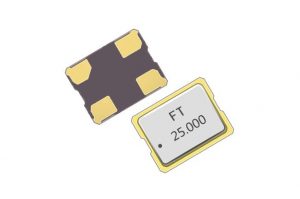The Importance of Frequency Stability for Maintaining Smooth Processes
The description of frequency stability
- When a signal or oscillator’s frequency is stable throughout time, it does not change significantly. In other words, it defines the ability of a signal or oscillator to sustain a particular frequency despite variations in temperature, voltage, and other external conditions.
- Parts per million (ppm), a unit of measurement for the fractional change in frequency over a certain period, are frequently used to assess the frequency stabilityof a signal or oscillator. For instance, a stability frequency of 1 ppm guarantees that throughout a certain period, the frequency of the oscillator or signal won’t vary by more than 1 part in a million.
- Many applications, such as clocks, communication, and navigation systems that need an exact time, require high-frequency stability. These systems’ accuracy can be decreased, and faults are introduced if an oscillator’s or signal’s frequency changes excessively.
- A signal or oscillator’s frequency stability may be increased by utilizing a high-quality quartz crystal unit, which is made to vibrate at a specified frequency with excellent precision and stability. Controlling temperature, regulating voltage, and using noise-cancelling methods are other elements that can impact frequency stability.
Reasons why frequency stability is essential for system reliability?
- The accuracy and consistency of the timing and synchronization of electronic components over time are made possible by frequency stability, which is essential for system reliability. Since electronic systems depend on exact timing and synchronization, even a tiny change in frequency can result in mistakes or system breakdowns.
- For instance, in communication systems, data transmission and reception depend heavily on the precision of the timing signals. Data mistakes that lead to information loss or damaged data might occur when the signal frequency is unstable.
- Precise timing is crucial for pinpointing a device’s location in navigation systems like GPS. Inaccuracies in the location computation might result from a slight change in the timing signal’s frequency.
- Frequency stability is essential for the dependable functioning of electronic systems, especially those that call on exact timing and synchronization.
- System designers may reduce mistakes and failures and enhance their systems’ overall performance and reliability by ensuring that the timing signals are accurate and reliable over time.
Why is Frequency stability essential for maintaining efficient processes?
For many different kinds of electrical systems to continue running well, frequency stability is crucial. The performance and dependability of the system may be adversely affected by mistakes, malfunctions, and interruptions brought on by an oscillator or signal with an unstable frequency. These are a few instances of how the stability of frequency is crucial for preserving efficient operations:

- Power Grids:
To guarantee steady and reliable electricity distribution, power grids depend on the exact synchronization and timing of the AC frequency. Variations in frequency can impact the power quality and potentially result in blackouts.
- Telecommunications:
Precisely time is essential in telecommunications systems to ensure that messages are delivered and received accurately. Dropped calls, sluggish internet connections, and other issues can result from even tiny frequency changes, creating mistakes and interruptions in data transfer.
- Defence and aerospace:
Precise timing and synchronization are crucial for navigation, communication, and weapon systems in defence and aerospace systems. Frequency variations can lead to navigational mistakes, missing messages, and even problems in the employment of weapons.
- Medical Technology:
Various medical technology depends on exact timing and synchronization to function. To identify and gauge the heart’s electrical activity, electrocardiograms (ECGs), for instance, employ timing signals. Any timing signal flaws or interruptions result in unreliable readings and potentially harmful incorrect diagnoses.
- Industrial Control Systems:
Industrial control systems require precise timing to ensure the dependable functioning of machinery and equipment. Any interruptions or mistakes in the timing signals might result in slowed production, defective products, or even safety risks.
Ultimately, sustaining smooth operations in many electronic systems depends on frequency stability. System designers may reduce mistakes, interruptions, and downtime, as well as enhance their systems’ overall performance and dependability by ensuring that the frequency of signals and oscillators is correct and steady throughout time.
How is frequency stability sustained?
Depending on the electronic system’s particular application and needs, various approaches and procedures can be used to maintain frequency stability. These are a few typical techniques for preserving frequency stability:
- Crystal oscillators:
For preserving the stability of frequency in electronic systems, crystal oscillators are frequently utilized. These oscillators employ a quartz crystal resonator to provide a steady and accurate frequency output. Crystal oscillators often have very high-frequency stability, with values as low as a few parts per billion (ppb) and as high as a few parts per million (ppm) (ppb).
- Temperature Compensation:
When temperatures change, oscillators and signals can wander in frequency. Temperature-compensated crystal oscillators (TCXOs) or oven-controlled crystal oscillators (OCXOs), which use temperature sensors and feedback circuits to maintain a constant temperature and frequency output, are two types of crystal oscillators’ electronic systems that may use to account for temperature changes.
- Voltage Regulation:
Voltage changes can also impact the frequency stability of electronic components. Voltage regulation circuits can maintain a consistent voltage level and guarantee a stable frequency output to address this.
- Noise reduction:
The stability of a system can also be affected by noise and interference from other electrical components. Noise reduction methods include grounding, filtering, and shielding.
Conclusion:
In electronics, frequency stability is crucial because it impacts the functionality and dependability of equipment. A device must keep its output frequency constant despite variations in the input signal or power source to achieve frequency stability. The company has always aimed to increase the value of its customers by offering a full range of solutions for various frequency control components, components, and modular design requirements to satisfy all of their needs. ChipSun Technology has consistently outperformed its customers’ expectations regarding price, quality, delivery, and other factors.
